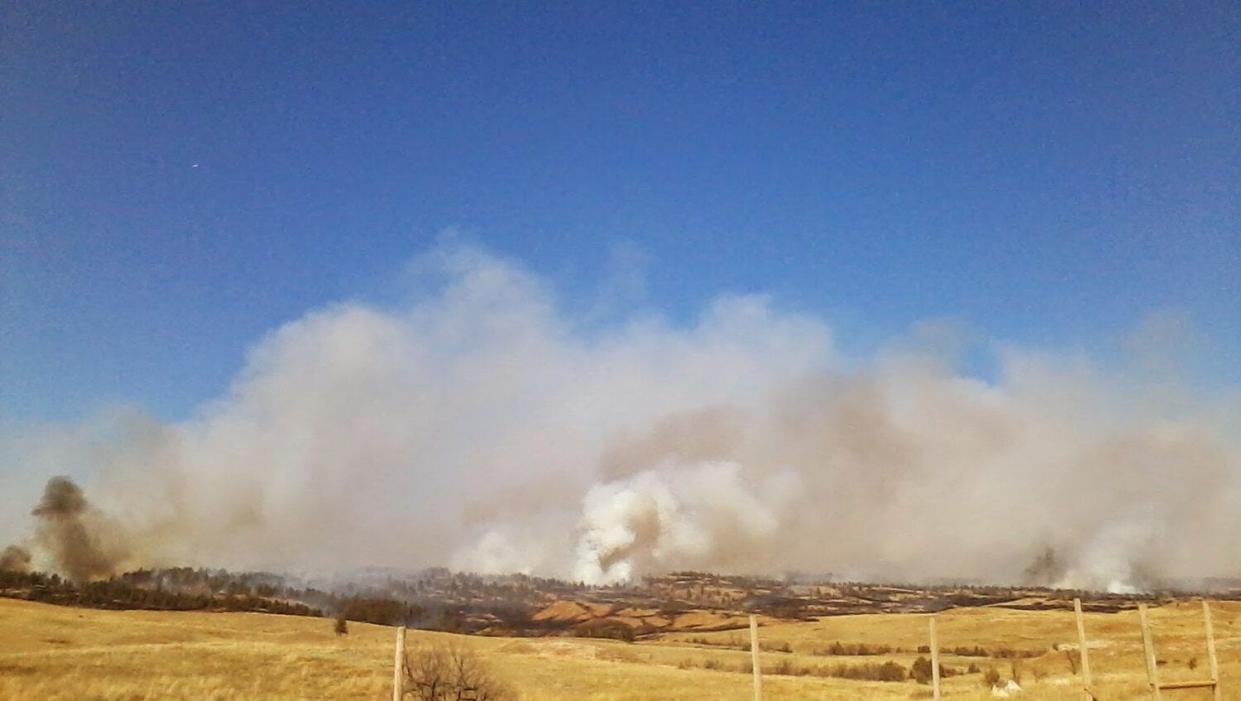Climate change is pushing wildfire smoke farther east in South Dakota

South Dakotans like to brag about their clean air, and for the most part, they’re right.
But that boast isn’t as true as it once was, especially in the half of the state to the right of the Missouri River on a map – a region known as East River.
Five East River cities have publicly available air quality data from the Environmental Protection Agency. All five suffered their worst daily Air Quality Index value sometime during the last four years.
Experts say one of the culprits is wildfire smoke drifting farther east. And the cause of that is climate change.
“Some of the communities that have historically had the cleanest air in the country are increasingly seeing more pollution coming in, and we see a lot of that coming in the form of particle pollution impacts from wildfires,” said Will Barrett, the American Lung Association’s national senior director of advocacy for clean air. “So as our climate is changing, it’s making it harder to keep the air clean.”
More:Forest Service fixing decades-old blunder in Black Hills
The average global temperature has risen by about 2 degrees Fahrenheit since 1880. Heat makes forests and grasslands drier, which leads to bigger wildfires and longer fire seasons. The average annual acreage burned by wildfires in the United States has roughly quadrupled since the 1980s.
South Dakota’s wildfire epicenter is the forested Black Hills, where the three largest fires in the area’s recorded history have all occurred during the 2000s. Monitoring data show that poor air-quality days in that region’s biggest population center, Rapid City, are trending more severe. But Rapid City’s residents have long been accustomed to periodic bouts with hazy skies and smoky air – both from local fires and blazes originating in Wyoming, Montana and other fire-prone areas of the West and Canada.
East River residents haven’t had to tolerate as much wildfire smoke, thanks to factors such as a wetter climate and a greater distance from Western fires. Until recently, some East River cities had never experienced a day with an unhealthy Air Quality Index, or AQI, in data stretching as far back as 1985.
AQI values start at a healthy zero and become unhealthy for sensitive groups at 100, unhealthy for everyone at 150, very unhealthy at 200, and hazardous at 300. The worst AQI value is 500.
Until four years ago, the highest AQI ever recorded in eastern South Dakota was 170. Since then, every East River city with data available from the EPA has surpassed that mark.
Aberdeen hit a state-record AQI of 429 in 2018. Other East River cities logged their worst-ever AQIs last year: 212 in Brookings, 244 in Pierre, 182 in Sioux Falls and 247 in Watertown.
Anthony Hericks has been a pulmonologist with the Avera health system in Sioux Falls for 13 years. He said those numbers align with his observations.
“The first 10 years, I don’t remember us having a lot of wildfire smoke roll through the Midwest,” Hericks said.
During the last several years, patients have reported smoke-related health problems more often.
“And you know, I just wait for the phone calls when that happens,” Hericks said, “because some people are just very sensitive to it.”
Smokers and asthmatics report more wheezing, coughing, chest tightness and shortness of breath when smoke is in the air, he said.
Hericks said the best defense against breathing wildfire smoke is staying indoors when the air is smoky. Respirator masks, like those worn to prevent the spread of COVID-19, may also provide some protection.
Barrett, of the American Lung Association, said wildfire smoke includes very fine particles that can damage lungs. And when wildfires burn through cities or residential areas, the smoke includes the remains of buildings, vehicles and consumer goods.
“Chemicals of all sorts get into the atmosphere and create a really toxic stew that is unhealthy to breathe,” Barrett said. “It’s often not well understood what’s in each fire, because every fire is different, and what goes up in it is different.”
More:Western U.S. heat wave brings smoke, fire danger to South Dakota: 'Pretty crispy, dry'
South Dakota’s East River region isn’t the only area losing its relative immunity to wildfire smoke. Last year, smoke from Western wildfires drifted all the way to New York City.
For those who get frustrated when smoke forces them indoors, Barrett encourages political action.
“Everyone has the ability to reach out to their local elected officials, their state and federal elected officials, and call for stronger actions on climate change,” he said.
This article originally appeared on Sioux Falls Argus Leader: Climate change is pushing wildfire smoke farther east in South Dakota

